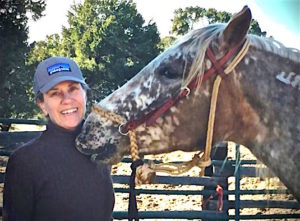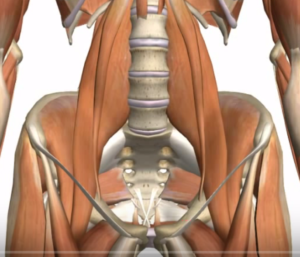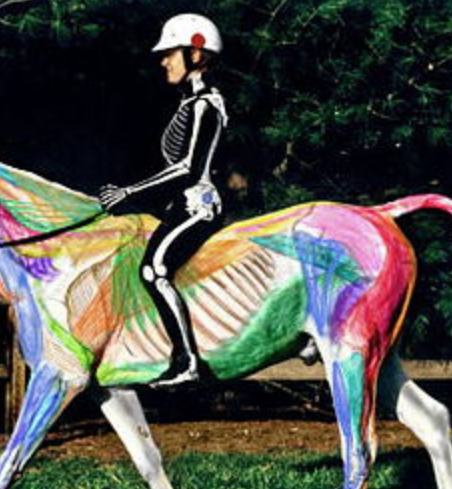We welcome Kerry O’Brien as a new guest columnist and Rider Fitness contributor.
Read more on Core Fitness here.
O’Brien is a therapist certified by the National Certification Board for Therapeutic Massage and Bodywork and  long-standing member of the American Massage Therapy Association. She blends hands on bodywork with biomechanical re-education. She owned Inspiring Motion, a bodywork and movement studio in Sherman Oaks, California, for a decade and recently moved to Cortez, Colorado with her adopted mustang. Her post here is part of our Special Section on Riding & Lady Bits.
long-standing member of the American Massage Therapy Association. She blends hands on bodywork with biomechanical re-education. She owned Inspiring Motion, a bodywork and movement studio in Sherman Oaks, California, for a decade and recently moved to Cortez, Colorado with her adopted mustang. Her post here is part of our Special Section on Riding & Lady Bits.
Read more on her mustang advocacy work here.
She writes:
Since the pelvis is our major means of communication with our horse, one can’t underestimate the importance of good pelvic biomechanics, including well-functioning hip and sacro-illiac joints.
Fluid movement and high function are what make an “independent seat.” It’s also what makes for beautiful riding, a horse-and-rider team melded together without any extraneous movement.

There are many overlooked muscles in the pelvic area
Success in this area is not just about that most popular of exercise terms, “core strength.” Nor is it about Kegel exercises (especially considering the fact that Kegels are very often performed incorrectly). Many pelvic floors are actually too tight and most people mistakenly rely on their extrinsic, prime movers (think big, outer muscles) rather than their intrinsic (small, inner) stabilizers.
Tight muscles are weak muscles. And clenching doesn’t help.
What does help:
- Releasing those too tight muscles.
- Retraining correct sequencing of the subtle, deep, stabilizing muscles. These are the pelvic floor, deep spinal stabilizers like multifidus and erector spinae, as well as the deep abdominals, transversus.
Other areas of concern for riders are the psoas (a hip flexor and lower back stabilizer) and the adductors, or inner thigh muscles, which are contiguous with the pelvic floor. Generally speaking, tight adductors equal a tight pelvic floor.
 So, the rehabilitative goal is first to release, secondly to increase awareness (what we might call neuromuscular intelligence, learning proper sequencing of this whole family of deep stabilizing muscles), and lastly, to strengthen.
So, the rehabilitative goal is first to release, secondly to increase awareness (what we might call neuromuscular intelligence, learning proper sequencing of this whole family of deep stabilizing muscles), and lastly, to strengthen.
There should be no gripping. Gripping is working from the outside in. The proper action comes the inside and if done correctly then riding can actually strengthen the pelvic floor and reduce incontinence.
It’s challenging to teach but it can be accomplished in most cases. Several years ago a study assessed the effectiveness of teaching pelvic floor exercises. Even after instruction from a physical therapist, eighty-five percent of patients did the exercises incorrectly. Considering that most often one is simply given a handout, the odds of correctly activating your innards are pretty slim.
I once had a male cyclist client who was very depressed because in spite of performing his pelvic exercises religiously, he was still incontinent months after prostate surgery. I suggested he return to his physical therapist to check if he was doing them correctly. Sure enough, he had been doing the exact opposite of what was required. Once the PT was able to clarify and correct, he was able to alleviate his incontinence almost immediately.
Good pelvic biomechanics can be learned and trained and best to do it off the horse. But riders can experience the benefits once horseback. I will say that my own years of training and learning to sequence independent movement from the inside out has made me a better as a 60-something rider than I had been decades earlier.
Work smarter, not harder!

Excellent article! Thanks for posting!